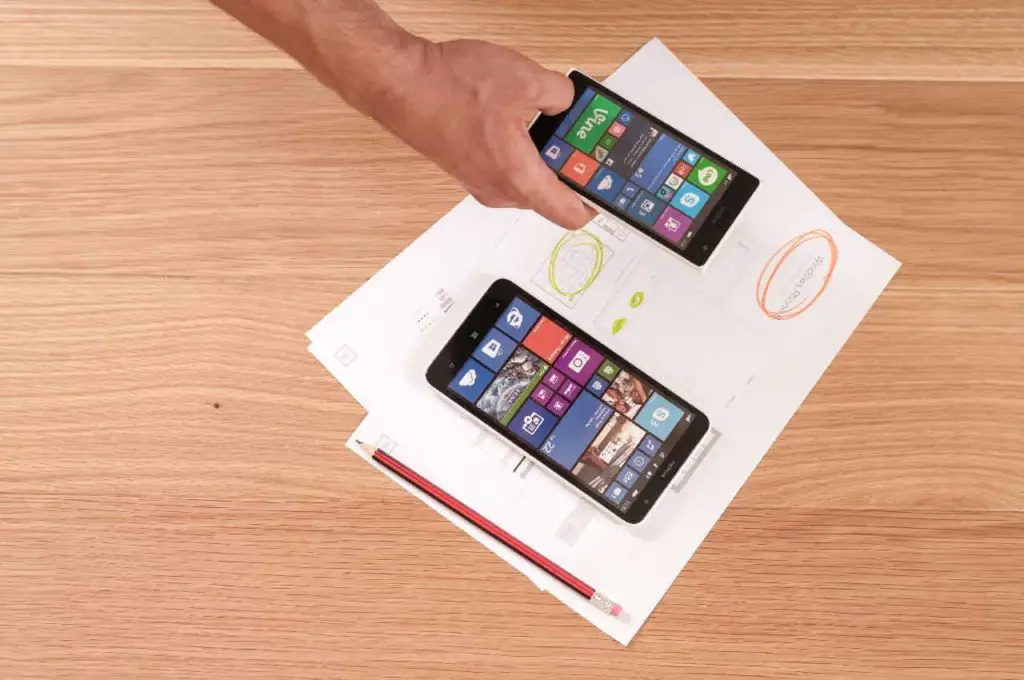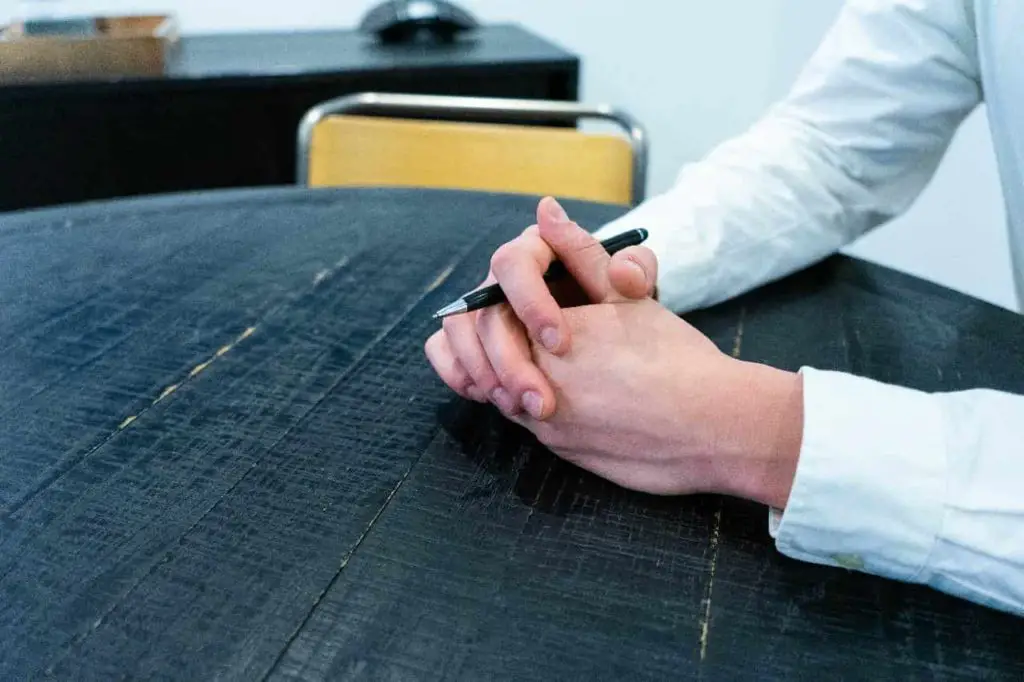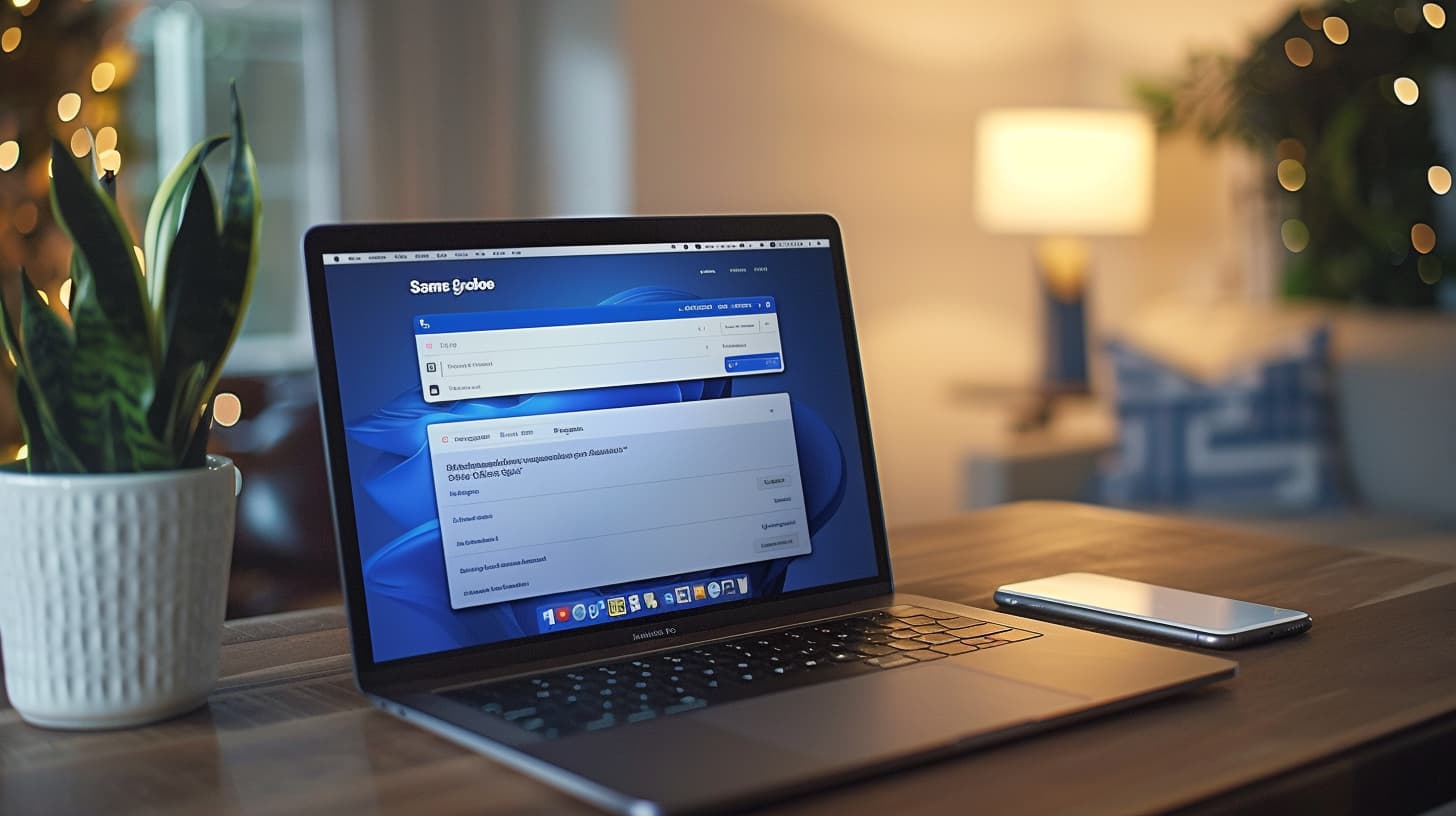Whether you’re looking for a safer way to receive money via check than a personal check or are dealing with a seller who demands something different, certified checks and cashier’s checks can be solutions. However, choosing between a cashier’s checks vs. certified check isn’t easy when you don’t know the difference between them. If you’re grappling with that choice, this post has your answer!
The primary difference between a cashier’s check and a certified check lies in how each type is funded. Assuming you’re making the payment, a certified check would be drawn against your checking account, whereas a cashier’s check would be financed from the issuing bank’s account.
Of course, there are other differences between these two types of checks, so be sure to read to the end for the specifics.
What Is a Certified Check?
Like a conventional personal check written, a certified check is funded from the signatory’s checking account. The difference is that before a certified check is issued, the bank verifies that the signatory has sufficient funds in their checking account to honor the check when it’s eventually presented for payment. This guarantees that you are not receiving a fake check.
In addition to the financial institution verifying that the account holder’s personal account has enough money to back up the check, the issuing bank ensures that the signature appearing on a certified check belongs to the signatory.
Both acknowledgments are backed by a bank representative’s signature and a “certified/accepted” stamp of approval that appears somewhere on the check. They have verified the customer’s signature and personal identification. Be sure to know is it possible to cash a check made in someone else’s name before heading to the bank.

Due to this verification process, certified checks provide a higher level of assurance to the recipient than personal checks. They are an official check.
You can stop payment on a certified check by contacting the issuing bank. There are other ways how to void a check but certified checks work different.
No, certified checks are not available for free; they cost about $25 from a financial institution, bank, or credit union and take up to three days to process them.
Yes, cashier’s check is a more secure option than personal checks because it has been verified by the account holder’s financial institution (bank). Additionally, you can use them to pay cash for a car for example as it will be an accepted form of payment.
How Do Certified Checks Work?
Once you’re issued a certified check, your bank or credit union holds an amount equivalent to the check’s worth in your checking account.
For example, if you have a balance of $2,000 in your bank account and get a certified check worth $500, you’ll be left with only $1,500 available for future transactions, even though your total account balance is $2,000.
By holding an amount equivalent to the check’s worth, the bank guarantees that there will be sufficient funds to cover the check when the recipient cashes it in. If you’re the recipient, this makes transactions safer by minimizing instances of bad checks. A bad check can leave you with returned check fees and a negative account balance, not to mention the headache of tracking down the individual who wrote the check to recover your money.
What Happens If a Certified Check Bounces?
On the rare occasion a certified check gets rejected or bounces, you can take legal action against financial institutions such as the bank involved and the payer.
Under UCC Sec. 3409 (d), both parties are liable for failure to pay except if:
- The bank signature appearing on the check has been forged instituting cashier’s check fraud.
- The certified check has remained outstanding for a period longer than the predetermined time indicated on the check (AKA, it has expired).
Personal Checks vs. Certified Checks
Writing a certified check isn’t all too different from working with a standard personal check. Perhaps the most significant difference is that with a certified check, you’ll need to make a stop at the bank for the verification process (some banks allow online applications, but these are very few).

That aside, the rest of the steps are generally the same as writing a personal check. You fill out the check just like you would a conventional check by entering the recipient’s name, amount and signing the check.
Since a certified check involves a stop at the bank for the verification, it’s less convenient if you’re the party making the payment. As such, it’s not the best type of check for everyday purchases. Consider using money orders, starter checks or third party checks as alternatives.
However, you’ll likely need these types of official checks for large purchases that you need to keep a paper trail for, like making a down payment on a car or home. It’s also ideal when you’re buying from someone you don’t trust, like a stranger you met online or a private party car sale.
Having defined a certified check and reviewed the steps for getting one, let’s review the potential benefits and drawbacks associated with checks of this type.
Pros
- A certified check is generally safer than a regular check. Even though a certified check isn’t exactly foolproof, it’s generally less susceptible to fraud. This is one of the main reasons certified checks are more suitable for purchases involving large sums of money than conventional checks. They are great alternatives to to when you have debit card declined codes.
- A certified check adds extra protection for the recipient. If you’re the one getting paid through a certified check, you have additional assurance that the check will clear compared to an individual getting paid with a conventional check. That’s because the bank or union issuing a certified check is obligated to verify that the account holder can fund the check, taking the substantial risk out of deals with strangers.
Cons
- It’s not entirely immune to fraud. As we’ll see in a later section of this discussion, scammers can sometimes find ways around a certified check’s security measures.
- It comes at a price. Banks and credit unions usually charge service fees to issue a certified check. Depending on the institution, service charges for this kind of check can be between $5 and $15. But if you request one from a bank that you already have an account with, these charges may be waived. Since every bank and credit union has different policies, you’ll need to check with yours to learn the specifics.
- It can be inconvenient at times. If your bank doesn’t issue certified checks online, it’s next to impossible to write this kind of check outside regular banking hours because that usually requires a stop at the bank. And even when the bank is open, that commute can be a hassle if traffic is an issue in your area. On the other hand, you can write a conventional check from the comfort of your home.
What Are Certified Checks Used For?
These checks can be used for making a large payment or paying personal loans. It’s a means of payment where a debit card from a personal account cannot be used. Using a certified check is one of the best ways to invest 50k in real estate. There are a lot of other transactions and uses for certified checks which include:
- Paying for a large purchase
- Pay bills
- Down payment on a house
- Giving as a gift
- Sending money to someone who doesn’t have an account at the bank you want to use
You can also cash them into your own checking or savings accounts, but that will require going back in person to the branch. Certified checks are very useful if you’re sending cash overseas instead of money orders. There are a lot of places to get a money order near me which makes money orders more convenient.
What Is a Cashier’s Check?
A cashier’s check is also issued by credit unions and banks. Like a certified check, this type of check guarantees the payee that there are sufficient funds to cover the check’s total amount. This way, the recipient is protected from bad checks.
How Do Cashier’s Checks Work?
A cashier’s check’s distinctive characteristic is that it draws on the financial institution’s funds instead of the account holder’s balance. You get a cashier’s check from the banks own account with its own funds. When you make the request, the bank checks your account balance to verify that it’s sufficient to cover the amount you’re looking to write a check for.
If so, it moves the money to its account from the customer’s account before issuing the check with the amount and your payee’s name already filled in. If you are short on cash, there are ways how to make $2000 in a month quickly.

Typically, many banks and unions don’t issue a “blank” cashier’s check. By “blank,” we mean without the payee’s name and the payment amount already filled in. So if you’re looking to use this type of check, be sure to know these two details (well, one of them, because no one would want to make a payment without knowing the amount) beforehand.
If you have a lost check, contact your bank branch immediately to have a stop payment order placed on the check.
Personal Checks vs. Cashier’s Checks
Another defining trait of a cashier’s check is that it protects both the payer and the payee. If you’re the payer and are cautious about disclosing your account number to your payee, a cashier’s check can help you keep this information private.
That’s because instead of printing the routing number and your bank account at the bottom of the check, the issuing bank enters its account number. So when the payee cashes in the check, they receive money from the bank’s account and not yours.
You could also send money anonymously on PayPal to avoid disclosing account information.
Cashier’s checks are also ideal for large payments that you want to keep a record of. You can use them to cover down payments for significant purchases such as a house, a car, and so on. Anything that you can use a certified check for you can use a cashier’s check for because both types of checks can be direct substitutes for each other.
There are also eChecks that exist. You can read what is an eCheck and how does it work for more info on the characteristics.
Even though cashier’s checks can be beneficial in several ways, they come with their fair share of potential drawbacks.
Here’s a quick summary of the pros and cons:
Pros
- Payments Are Guaranteed to Clear
- Since a cashier’s check is drawn against the union/bank involved, the recipient enjoys a greater guarantee that the check won’t bounce due to insufficient funds. As the payee/seller, this helps you avoid returned payment fees and overdrafts. For the payer/buyer, this may help speed up deals with unfamiliar sellers who may be having reservations about transacting with you out of fear of being scammed with a bad check.
- For these reasons a lot of places accept these checks. The Walmart check cashing policy allows for cashier’s checks.
- Checks Clear Faster
- Banks leverage fund availability policies to decide how long you’ll have to wait for a check deposit to clear. Generally, conventional checks clear in about five business days. If it’s a large deposit, this can be longer. Since cashier’s checks are drawn against the issuing bank and guaranteed, the entire amount tends to clear faster than personal checks, taking about a day.
- There’s Added Protection for Both the Buyer and Seller
- Since a cashier’s check can only be cashed by the individual it’s issued to, it carries less fraud risk. It’s hard to create fraudulent cashier’s checks. What’s more, checks of this type typically come with anti-fraud provisions like watermarks to prevent duplication. They also hide the buyer’s bank account from the recipient, helping preserve privacy.
Cons
- Cashier’s checks aren’t foolproof.
- Even though a cashier’s check is more secure than a conventional check, it isn’t entirely foolproof (we’ll cover the specifics in a later section when comparing cashier’s checks to their certified counterparts).
- Service fees may apply.
- Most banks will charge $3 to $10 to issue a cashier’s check. Some may even issue these checks for free to customers with premium checking accounts, so be sure to inquire with your bank to see if you qualify for a free cashier’s check. An Alternative is to shop online with eCheck purchases to avoid fees.
- Cashier’s checks can be inconvenient.
- Unlike a personal check where you can use instant online check cashing, writing a cashier’s check requires you to visit the bank. That can be problematic in high traffic areas or during odd hours. Additionally, 7-Eleven check cashing prevents this type of check to be cashed there directly.
- You might need an indemnity bond.
- If you have lost your check and need a replacement check, you may be required to secure an indemnity bond. You may not be able to get a replacement check or get a cashier’s check without an indemnity bond.
Cashier’s Check vs. Certified Check: What’s the Difference?
Knowing whether to use a cashier’s check vs certified check can impact your financial decisions. Whether certified or cashier’s check, the bank certifies the exact amount of the check drawn against the bank customer, usually the sender. There are also differences that exist as well between certified check vs cashier’s check. If you’ve been following closely, you likely have an idea of the primary distinction between a cashier’s check and a certified check.

In case you missed the information, here is a recap:
- The main difference between these two types of checks is that a certified check draws from the payer’s checking account, whereas a cashier’s check is funded from the bank’s account. Make sure you know bank direct deposit times so you have money in your account.
- Another difference between these two types of checks is that, unlike a certified check, a cashier’s check doesn’t disclose your account number to the recipient. Since it’s drawn against the bank’s account, it bears the financial institution’s account number. They are official bank checks without your account information.
- In addition to this primary distinction, there are other subtle differences between a certified check and a cashier’s check. These manifest in terms of the level of security provided and the service fees associated with each option.
Let’s review each of these differences separately in the next section.
Service Fees
As we’ve seen earlier, the extra protection provided by both certified and cashier’s checks comes at a fee. Some advantages and disadvantages of online banking are service fees. While the costs may vary with the bank or credit union, cashier’s checks tend to be slightly cheaper to obtain than certified checks. However, there isn’t much of a difference in the service cost, so don’t expect to save more than $20 by choosing a cashier’s check over a certified check.
The Level of Security Provided
Although both types of checks are generally more secure than conventional personal checks, cashier’s checks have a slight edge over certified checks in this regard. Cashier’s checks don’t disclose your phone number, email, account number with the recipient, which is helpful when transacting with suspicious individuals.
The recipient of a cashier’s check has greater assurance that it’ll clear. While banks and unions usually hold an equivalent of the check’s face value before issuing a certified check, the funds remain in the account holder’s checking account until the check is cashed.
Sure, the account holder cannot touch that money, but a lot can happen to the bank account in question between the time a certified check is issued and cashed. And since the liability for a certified check rests with both the bank and the check writer, it can be quite a hassle to follow up when someone writes you a bad one.
- With a cashier’s check, the recipient enjoys a greater guarantee that the check won’t bounce because the bank (not the individual account holder) is liable for a bad check. The check’s face value amount is debited from the account holder’s account the moment the bank prints a cashier’s check. This way, the recipient can rest assured that the check will clear regardless of what happens to the payer’s account between the time the check is written and the time it’s cashed.
Cashier’s checks are less susceptible to forgery (duplication, to be specific) than their certified counterparts. With that said, neither check type of entirely immune to fraud. There are check cashing apps that don’t use Ingo, but you may still face issues.
It’s not uncommon for scammers to create authentic-looking counterfeit cashier’s checks and certified checks. If you get paid with such a check, it can take some time to realize that it’s fake, and by then, you might have already shipped out the goods or rendered the services you’re getting paid for. And, this is not the only trick fraudsters use.
The FTC guide identifies several schemes used by scammers, and most of them involve checks. The oldest trick in the book involves getting a check (including cashier’s or certified) for more than what you charged for specific goods or services. When this happens, the next thing the scammer will ask you is to reimburse the extra amount, only to realize that they never made any payment in the first place when the check bounces several weeks later.
Why Is This Possible?
Simple: banks have a legal obligation to make deposited funds available in a few days. Until the future of money changes, this is a bank requirement.
Due to this requirement, your bank may make funds available a few days after cashing the check and indicate that it has “cleared.” However, that doesn’t necessarily mean that the check in question is authentic because bad checks can take weeks to detect. By that time, the scammer will already have your money, not to mention that you’ll be left repaying the bank.
If you ever suspect that someone has written you a bad check, contact the issuing bank to confirm. Don’t call the number appearing on the check because that might also be associated with the scammer. Instead, go online, look up the number independently, and call the bank to verify the account holder’s name, check number, and check requester (in case of a cashier’s check).
Summary on Cashier’s Check vs. Certified Check
Hopefully, this guide has cleared the air regarding the difference between cashier’s checks and certified checks. In case you missed a few key points, here’s a summary of what we’ve covered: the main difference between these two types of checks is that a cashier’s check is drawn against the issuing bank’s account. Knowing the differences are important how to teach teens about financial responsibility and personal finance.
That’s unlike a certified check, which is drawn against your account balance. It’s also worth noting that cashier’s checks are generally safer. They may also be cheaper than certified checks, but not by much.



